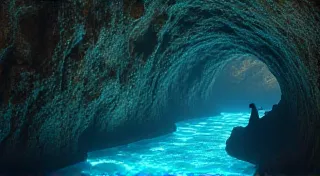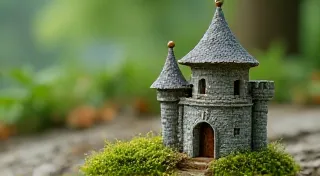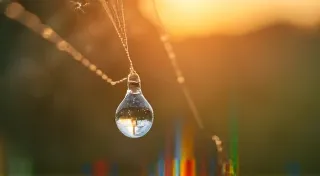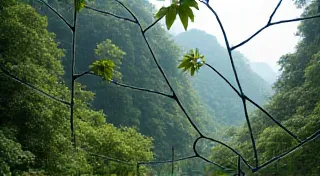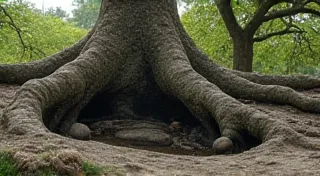Stone and Shadow: Orchid Habitats and the Art of Environmental Mimicry
There’s a certain reverence that settles over you when you truly begin to understand the lives of rare orchids. It’s not just about the exquisite beauty of their blooms, though that undeniably plays a part. It's about the tenacity of their existence, the sheer improbability of their survival in environments so specific, so unforgiving. For the orchid enthusiast, it's a journey that leads not just into the realm of botany, but into a profound appreciation for the intricate dance between life and landscape.
My first encounter with this understanding came with a Paphiopedilum rothschildianum. A plant whose story is almost as captivating as its appearance. It was at a small, independent nursery, tucked away in a forgotten corner of a botanical garden. The owner, a wizened man named Silas, introduced me to it with a quiet dignity. He spoke of its original home, the remote forests of Mount Kinabalu in Borneo, a place of perpetually veiled peaks and torrential rains. He described how it clung to moss-covered limestone cliffs, a silent sentinel in a world of shadows and perpetual moisture.
Paphiopedilum rothschildianum, now rightfully considered one of the most prized (and sadly, threatened) orchids in the world, isn’t just clinging for dear life; it’s a master of disguise. Its velvety, mottled leaves perfectly mimic the surrounding moss and lichen, making it virtually invisible to grazing animals. The flower, a complex arrangement of sepals and petals, takes years to develop, a testament to the plant’s deliberate, energy-conserving strategy. It's a stark reminder that beauty often arises from the harshest conditions.
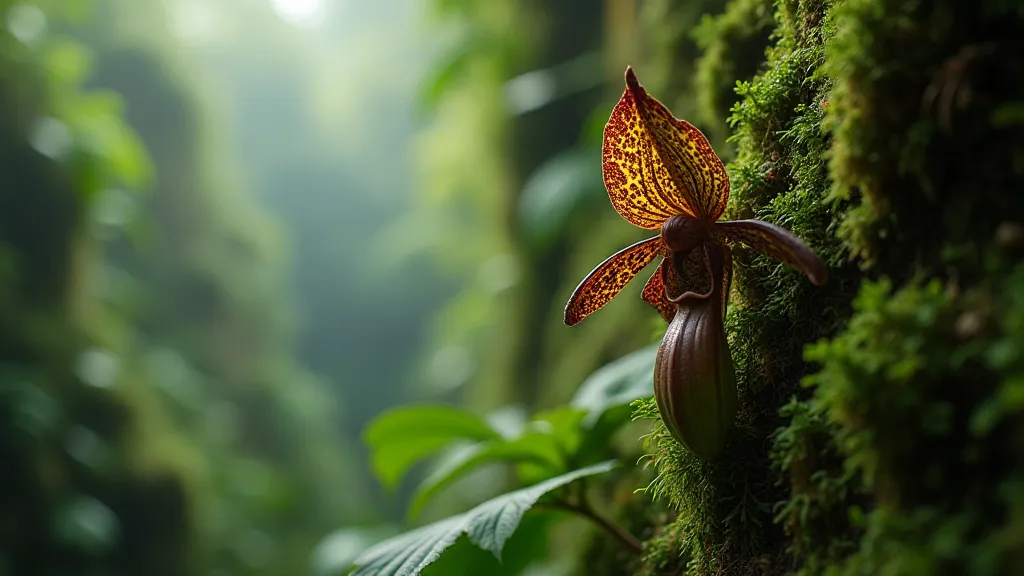
The Architecture of Adaptation: Roots, Leaves, and Epiphytism
Orchids, as a family, are incredibly diverse, but the rarer species push the boundaries of adaptation to astonishing degrees. Their physical characteristics aren't random; they are the product of millennia of evolution sculpted by the forces of their environments. Let's consider the root structures. Many rare orchids, particularly those found on rocky outcrops or steep cliffs, have highly specialized aerial roots. These roots aren't just for anchorage; they are often heavily velamen-covered – a spongy layer of cells that absorbs moisture and nutrients directly from the air and rainwater. This adaptation allows them to thrive in nutrient-poor environments where conventional root systems would struggle. The intricacies of nutrient management in orchid cultivation are truly an art, and some growers delve into the process as deeply as alchemists seeking to transmute base metals into gold. To understand the principles involved, a gardener might wish to explore the delicate balance of creating the perfect environment and the subtle art of orchid feeding, ensuring they're receiving the ideal sustenance.
Leaf morphology is equally crucial. Think of Dendrophylax lindenii, the Ghost Orchid of Florida. Its leaves are virtually non-existent, relying almost entirely on its symbiotic relationship with mycorrhizal fungi for photosynthesis. This radical simplification allows it to survive in the deep shade of cypress swamps where light is scarce. In contrast, orchids inhabiting sun-drenched, exposed cliffs often develop thick, leathery leaves to minimize water loss. The shape, texture, and even the color of the leaves are all adaptations that dictate its survival. Successful propagation requires a deep understanding of these subtleties, akin to a transformative process of orchid propagation and the subtle art of transformation, where even minor adjustments can dramatically impact the outcome.
Then there’s the fascinating world of epiphytism. Many rare orchids aren't rooted in soil at all, but instead grow on the branches of trees, high above the forest floor. This allows them to access sunlight and air circulation that would be unavailable to ground-dwelling plants. However, it also exposes them to harsh conditions – intense sunlight, desiccation, and violent storms. Rare epiphytes have evolved remarkable strategies to cope with these challenges, from developing aerial roots that grip tightly to the bark of trees to producing specialized tissues that retain moisture. The effort of restoring orchids and fostering their resilience often requires adopting perspectives that echo the profound connection between our transient world and nature’s ability to adapt. A gardener focused on orchids might find the principles of cultivating resilience particularly insightful—a process reflecting the broader theme of cultivating resilience in a transient world.
Historical Echoes: The Hunt for the Phantom Orchids
The story of rare orchid cultivation is intertwined with a history of exploration, both scientific and, unfortunately, exploitative. The Victorian era saw the rise of "orchid mania," a period of intense fascination with these exotic plants. Wealthy collectors would commission expeditions to remote corners of the world in search of new and unusual species. While this era undoubtedly contributed to our understanding of orchid diversity, it also led to the over-collection of many rare orchids, pushing some species to the brink of extinction.
The search for Phragmipedium kovachii, discovered in a remote region of Peru in 1997, exemplifies this bittersweet history. Named after the American orchidologist who first located it, this tiny, jewel-like orchid is now considered one of the rarest plants on Earth. Its original habitat – a tiny, blackwater stream – has been severely impacted by deforestation and mining. The story of its discovery is a triumph of scientific perseverance, but it’s also a stark reminder of the fragility of these ecosystems and the responsibility we have to protect them. The rarity of certain species isn’t just a matter of luck; it's often the result of habitat destruction and unsustainable collecting practices.
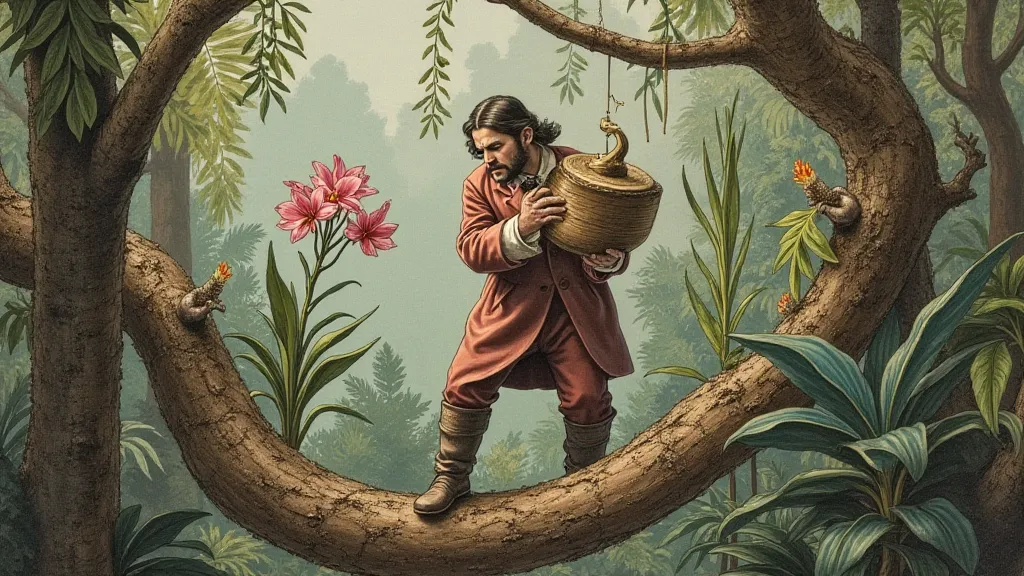
Mimicry in Miniature: Restoration and Responsible Cultivation
Cultivating rare orchids is more than just a horticultural pursuit; it's an act of conservation. By recreating their natural habitats as closely as possible, we can provide a safe haven for these threatened species and contribute to their long-term survival. The key is understanding the principles of environmental mimicry. This means replicating not just the physical conditions – humidity, temperature, light – but also the biological factors that influence their growth. This could involve using specific types of moss, replicating the mineral composition of the water, or even introducing beneficial insects and fungi.
The challenge lies in the complexity. A Bulbophyllum species from the cloud forests of Southeast Asia will require dramatically different conditions than a Paphiopedilum from the limestone cliffs of Borneo. Research is crucial. Speaking with experienced growers who specialize in particular genera, studying published research, and even visiting collections with established populations can provide invaluable insights. Furthermore, ethically sourced plants are essential. Supporting nurseries that prioritize sustainable collection practices and propagation is vital to protecting wild populations.
There’s a quiet satisfaction that comes from successfully cultivating a rare orchid, a sense of connection to the natural world and a profound respect for the resilience of life. It’s an invitation to slow down, to observe, and to appreciate the subtle beauty of a plant that has defied the odds to thrive in the stone and the shadow. The shadows themselves evoke a certain mystique, creating an environment that can be carefully cultivated for a certain effect. Perhaps a gardener might seek to cultivate shadows and mystery in their botanical narrative, further enhancing the unique beauty of their rare orchids.
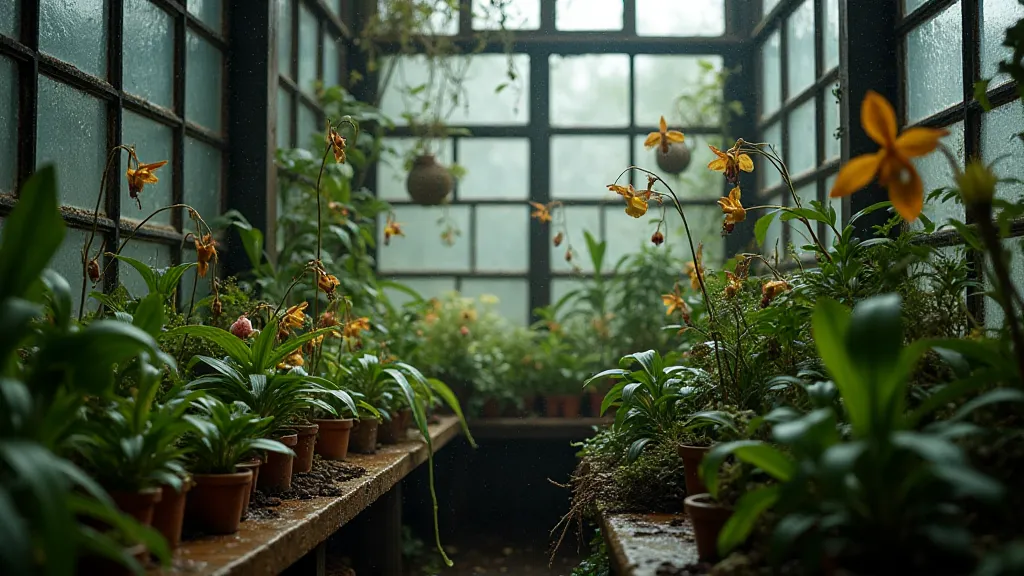
A Note on Sustainability
It's vitally important to remember that acquiring and cultivating rare orchids carries inherent responsibilities. Always ensure plants are legally and ethically sourced, and never collect orchids from the wild. Prioritize propagation and responsible collecting practices to protect wild populations and contribute to their conservation.
